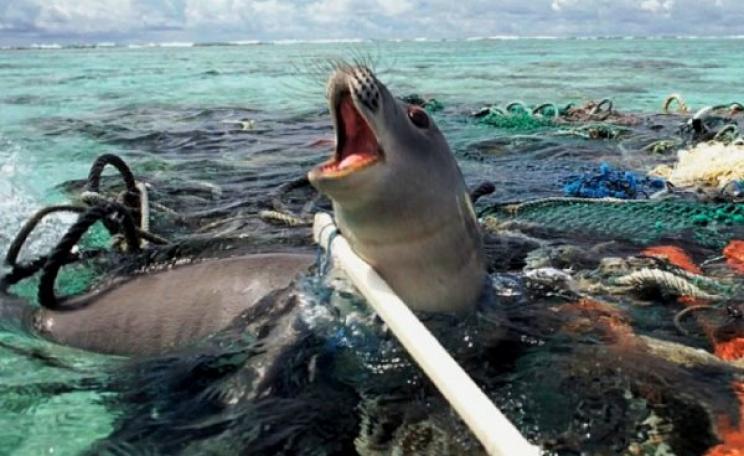The health of the Arctic polar bear is being attacked from all fronts, but among many other factors is the exposure to environmental contaminants.
Greenland's polar bears have a thyroid problem. Their endocrine systems, too, are being disrupted.
In both cases the culprit agency is environmental pollution by a range of long-lived industrial chemicals and pesticides.
This is the conclusion of a new paper by Kristin Møller Gabrielsen of the Norwegian University of Science and Technology in Trondheim and colleagues in the journal Environmental Research.
The scientists examined the liver, muscle and kidney tissues taken from seven polar bears killed by Inuit hunters in East Greenland in 2011 and analysed the effect of more than 50 contaminants in plasma samples from Ursus maritimus.
Their aim was to see what effect organohalogen compounds could have on the bears' thyroid systems, which are physiologically essential for growth, development, reproduction, stress response, tissue repair, metabolism and thermoregulation (an animal's ability to keep its body temperature within limits).
High concentrations of contaminants
Thyroid disruption at any stage of life can be damaging to all mammals and their chances of reproductive success, but thyroid regulation is vital in the earlier stages of life.
But the researchers found high concentrations of plastic pollution and pesticide contamination in the creatures' tissues, many of which could affect the hormonal systems.
"The health of the Arctic polar bear is being attacked from all fronts, but among many other factors is the exposure to environmental contaminants", said Maria Jesus Obregon, of the Biomedical Research Institute in Madrid, one of the authors.
"A wide variety of organochlorine compounds and pesticides have an effect on the thyroid hormones in plasma, tissues and deiodinase enzymes, which are in charge of stabilising the thyroid hormones in tissues."
As a marine mammal, the bear is exposed to a huge range of pollutants delivered by modern industry, transport and commerce. Many persistent pollutants are concentrated as they move up the food chain making high level predators like large cetaceans and polar bears most vulnerable to their impacts.
Retreating ice
Polar bears already face an uncertain future thanks to climate change: the Arctic's most iconic predator depends on sea ice for access to the most nourishing prey - seals.
The health of the Arctic polar bear is being attacked from all fronts, but among many other factors is the exposure to environmental contaminants.
Thanks to intense warming in the Arctic diven by greenhouse gases discharged by humankind, the ice is in retreat, and the biggest problem that confronts Ursus maritimus is still climate change, loss of habitat and a more precarious food supply.
But the threats to the species are growing in both scope and scale. Researchers in February calculated that in 2010, around eight million tons of plastic waste ended up in the world's oceans. The resulting plastic particles concentrate organic pollutants out of seawater, which they then pass into the food chain when ingested.
A second team of researchers has framed guidelines for the conservation of the polar bear, and proposed 15 measures that could determine the factors important in saving the creature from ultimate extinction.
They report in the journal Science of the Total Environment that they questioned 13 specialists from four nations to propose ways of measuring polar bear health. Climate change topped the list of threats, but the list also included nutritional stress, chronic physiological stress, diseases and parasites, and increasing exposure to competitors. Exposure to contaminants was the third largest threat.
"We still don't know to what extent environmental changes will affect polar bear health and therefore its conservation", say the authors.
Tim Radford writes for Climate News Network.
The papers:
- 'Thyroid hormones and deiodinase activity in plasma and tissues in relation to high levels of organohalogen contaminants in East Greenland polar bears (Ursus maritimus)' is published in Environmental Research.
- 'Establishing a definition of polar bear (Ursus maritimus) health: A guide to research and management activities' is published in Science of the Total Environment.







